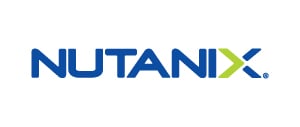July 26, 2023
How Data Center Optimization Helps State and Local Agencies Improve Services
An effective IT infrastructure enables governments to boost security, reduce costs and better use data.
IN THIS ARTICLE
Data Center Optimization Challenges and Solutions
A Strategic Approach to Data Center Optimization
Data Center Optimization: What Success Looks Like
The Need for a Modernized IT Infrastructure
The modernization of legacy IT infrastructure is a top priority for state and local government agencies. Leaders at the local, county and state levels are looking to enhance, renovate and replace their legacy infrastructure and applications, with the goal of streamlining their business processes and improving the services they provide to citizens.
The modernization of IT systems and services has long been a priority — and a challenge, given the realities of both budget constraints and relatively small IT departments — for many government agencies. However, the events of the past few years have highlighted the importance of modernizing and optimizing technology systems and services. In National Association of State Chief Information Officers’ (NASCIO) 2021 State CIO Survey, 94 percent of state technology leaders said the pandemic increased the demand for digital government services (with 53 percent saying this demand increased “dramatically”).
The IT limitations exposed by the pandemic appear to loom large in the minds of IT leaders. In NASCIO’s 2022 survey, CIOs ranked their priorities and initiatives that would continue after the pandemic. At the top of the list: increased attention to digital government services and the citizen experience, followed by increased investment in legacy modernization. These priorities beat out areas of concern that were more specific to the pandemic era (such as broadband expansion, support for remote work and expanded use of collaboration platforms), suggesting that state IT leaders see digital government and legacy modernization as long-term areas of focus.

Consolidation continues to be an important objective for government agencies as they seek to modernize and optimize their data centers. Many IT leaders want to centralize operations and the resources that support them, helping them to offer services in a more efficient manner. They recognize that modernization and optimization initiatives can create opportunities to offer more online services to businesses and residents, and to deliver a better overall experience.
Additionally, data center equipment simply wears out eventually. While state and local government agency leaders are experts at stretching their budgets and getting the maximum value and lifespan out of their infrastructure, there comes a point when data center equipment must be replaced to prevent performance degradation and service interruptions.
Many government agencies have delayed their IT modernization efforts because of cost, complexity and overburdened internal IT staff, but leaders within these agencies recognize that with continued delay comes risk. In addition to impacts on operations, technical debt can create ongoing maintenance requirements that many agencies simply can’t meet with their existing staff. Outdated infrastructure also poses a security risk to state and local governments, which are prime targets for cyberattacks, both because these organizations house large volumes of sensitive data and because hackers may perceive the cybersecurity efforts of government agencies to be lagging behind those of comparably sized corporations.
Finally, state and local governments are, in some sense, in competition with each other to attract businesses and residents that will generate economic activity and tax revenue. The states, counties and cities that provide the best services to citizens through digital government may see fewer barriers to this growth.
Key Objectives for Data Center Optimization
State and local governments are pursuing numerous objectives with their data center optimization efforts. These initiatives can help agencies achieve important objectives.
Security
Protecting sensitive citizen data is a top priority for state and local governments. Optimized infrastructure enhances data governance and management, which improve an agency’s cybersecurity posture.
Workforce
Recruiting and maintaining a skilled IT workforce is a major challenge. An optimized data center can reduce the burdens on IT professionals, leading to greater productivity and satisfaction.
Services
By improving the way they use their IT resources and manage data, agencies can enhance their ability to deliver valuable services to citizens.

While the data center optimization challenges facing state and local governments can be daunting, the right mix of solutions can help agencies to modernize their infrastructure and processes.
– Challenges
Modernization and Consolidation
Even after years of consolidation efforts, many state and local governments are still looking to minimize the number of physical data centers they run. At the same time, they are racing to enhance, renovate and replace legacy platforms and applications before technical debt creates performance or security problems.
Data Management and Security
The challenges in collecting and managing data are many: data governance; data architecture; master data management; open data; sustained access to government data; data portals; enhancing the role of data throughout the organization; data integration; and data strategy, just to scratch the surface. And, of course, government agencies must protect the sensitive personal information that makes them a prime target for cybercriminals.
Workforce Limitations
It is no exaggeration to say that the ability to establish and maintain an effective IT staff is the most essential component of a CIO’s success. But government agencies often have relatively small, overburdened IT staffs, and they typically lack the financial resources to add skilled professionals to their teams.
Elected Leadership
Buy-in from leadership is critical to the success of any IT initiative. In government, political appointees may not fully understand the needs of agencies and their IT operations. Further, following each election cycle, new leaders may abruptly make changes to the initiatives of the previous administration.
– Solutions
Business Continuity
Agencies need backup and recovery solutions that will ensure uptime and that can stand up to cyberthreats, including ransomware. Also, organizations need the technology to support secondary sites for business continuity. Many agencies are turning to the public cloud for these capabilities.
IT Infrastructure Management
Effective IT infrastructure management — supported by network management and visibility tools — is crucial to maintaining reliable networks, uninterrupted connectivity and efficient operations. Infrastructure management solutions provide real-time monitoring and control, and offer insights into network performance, traffic patterns and security threats.
Cloud Management
State and local governments need a variety of solutions and services to help them determine which applications to migrate to the public cloud, which to keep on-premises and whether a hybrid cloud strategy meets their needs. Cloud access security brokers, or CASBs, can help implement access management and data loss prevention capabilities to control access to cloud-based assets.
Staff Augmentation
Outside services can help overburdened government IT departments tackle routine management or special projects. Automation can also play a significant role in helping organizations maximize their staff resources by reducing the need for human intervention to complete common, repetitive tasks and freeing people up for more strategic projects.
Data Center Modernization: By the Numbers
59%
The percentage of organizations that identify data center infrastructure as a top priority for automation1
70%
The percentage of organizations that are expected to implement structured infrastructure automation by 2025 to deliver flexibility and efficiency1
56%
The percentage of state CIOs who plan to consolidate infrastructure as a way to deliver services to agencies2
87%
The percentage of organizations that are using a multicloud approach to IT3
Sources: 1gartner.com, “How to Evolve Your Physical Data Center to a Modern Operating Model,” March 29, 2023; 2NASCIO, “The People Imperative: The 2022 State CIO Survey,” October 2022; 3flexera.com, “Flexera 2023 State of the Cloud Report,” April 5, 2023
Too often, data centers are modernized with something of an ad hoc approach. Rather than crafting a deliberate strategy to guide their efforts, organizations may simply replace equipment when they have the funds — or, worse, when outdated infrastructure is already causing performance or security problems. Instead, state and local government IT leaders should identify their desired outcomes and then map out the path that will get their organizations where they need to be.
As they strategize their data center optimization initiatives, state and local government IT leaders should keep these important considerations in mind.
Strategic Financing
Government agencies often have unique budgeting considerations, and it is important for internal teams and external partners to take these into account when mapping out a data center optimization strategy. For instance, some governments may allocate capital funds to agencies once every several years or rely on public bond votes to secure the resources needed for infrastructure upgrades. In this case, IT leaders may prefer a capital expense (CAPEX) financing model because they can’t be sure of the reliability of funding in the out years. By contrast, agencies with more predictable yearly funding may be more likely to opt for an operating expense (OPEX) model to finance upgrades.
IT Support
Ongoing support for IT infrastructure is an important part of asset lifecycle management. Rather than waiting for problems to pop up, government agencies should take a proactive stance, planning out how they intend to manage and maintain their data center equipment over time. For this reason, extended support contracts can be particularly valuable to state and local governments, as these allow agencies to continue to support their legacy equipment with additional warranty coverage after the initial coverage period passes. For agencies that are unable to secure funds for equipment upgrades, extended IT support gives them the ability to squeeze more life out of their infrastructure.
Strategic Planning
Many state and local government agencies turn to a trusted third-party partner such as CDW•G for help with planning their data center upgrades and other strategic IT initiatives. Partly, this is because partners often have more experience with such planning than internal staffers, having worked with countless other organizations to help them achieve a wide range of objectives. But also, government IT leaders can use the endorsement of a third-party partner to validate long-term strategies in the eyes of elected leaders and political appointees, who might otherwise be inclined to change course to achieve short-term financial and policy objectives.
Managed Services
Managed services is another area where third-party partners can deliver value for overburdened government IT staffs. Offerings range from Data Center as a Service (where partners essentially take over all aspects of data center management) to more limited engagements such a Infrastructure as a Service or Backup as a Service. While as-a-service models may be particularly attractive for certain government agencies, they are also being adopted across industries. Gartner predicts that by 2025, 40 percent of newly procured on-premises compute and storage will be consumed as a service — up from less than 10 percent in 2021.
Sustainability in the Data Center
Many state and local governments face either explicit regulatory mandates or pressure from citizens to become more sustainable in their operations, and data centers are large consumers of energy. In addition to contributing to sustainability goals, making data centers more efficient can significantly cut down on operating expenses.
40%
The percentage of a data center’s energy consumption that results from cooling1
28%
The percentage of organizations that say their data centers have gone a long way toward or have arrived at their goals for carbon neutrality2
45%
The percentage of organizations that cite “economic sense” as a top driver of sustainability in the data center2
44%
The percentage of IT decision-makers who say that energy cost benefits are among the most significant factors in delivering a successful sustainability program2
Sources: 1mckinsey.com, “Investing in the Rising Data Center Economy,” Jan. 17, 2023; 2Data Center Dynamics, “Sustainability: Attitudes and Trends,” November 2022
As leaders in state and local government begin their data center optimization journeys, it is important to start with the end in mind. By defining their desired outcomes, leaders can keep projects on track, avoid waste and unify their teams around a common goal. Although different agencies may have slightly different objectives, there are three outcomes that are important for virtually every organization: an enhanced customer experience, improved cost control, and more robust data integrity and security.
With an effective data center optimization strategy in place, state and local agencies can expect to derive valuable benefits from their IT infrastructure.
Customer Experience
An optimized data center can help governments provide more scalable digital services that meet their citizens’ needs. Automation tools are often extremely important in helping to deliver an improved experience, in part because they allow IT staffers to focus on solving citizens’ problems, rather than on the mundane IT maintenance tasks often associated with data center management.
For example, in Florida, CDW helped to upgrade data center infrastructure to support a website that allows the state to better serve residents affected by natural disasters.
Cost Control
By leveraging economies of scale and automation, government agencies can lower unit costs within the data center. And by reducing operational inefficiencies through monitoring and control tools, they can often save on operating costs as well. It is important to note that cost models may change as the result of a modernization effort (often from a CAPEX model to an OPEX model).
For instance, when Massachusetts moved from what the state’s CIO called a “hodgepodge” of government-owned data centers to a cloud-driven environment, the state saw new recurring costs for cloud resources. The state CIO noted that the model is sometimes more expensive than agencies are accustomed to — but that is because those agencies previously took an unsustainable “buy it once and forget about it” approach to data center infrastructure.
Data Integrity and Security
Data center optimization efforts often help agencies enhance their operational capabilities and eliminate the traditional challenges of data silos and data duplication. This is important for mapping out application interdependencies, improving performance, reducing storage costs and simplifying security.
An improved cybersecurity posture not only protects citizens’ data from hackers who want to steal this information and sell it on the dark web, but also can lead to improved physical safety. Public utilities, for instance, are top targets for malicious actors (including terrorists and hostile nation-states) who want to launch attacks on critical infrastructure.
Key CDW Services and Solutions
Power and Cooling Services: CDW’s power and cooling experts can help state and local governments to identify inefficiencies in their existing environments and design a plan of action to reduce operating expenses, improve resiliency and make progress toward sustainability goals.
Hyperconverged Infrastructure: Because of its modular design, hyperconverged infrastructure can offer cloud-like scalability in an agency’s on-premises data center. HCI can also provide agencies with benefits of availability, flexibility and fast deployment.
Managed IT Services: CDW offers a wide array of services for virtually every aspect of data center optimization, including data services, security services, colocation services, managed cloud services and connectivity services. Depending on the engagement, CDW’s experts can deploy and manage solutions on behalf of agencies so that internal staff can attend to their day-to-day duties.
Story by
Scott Hansen, who oversees state and local hybrid infrastructure for CDW and helps to develop strategies that best serve organizations’ long-term success.
Chris Moran
Pat O’Brien, a senior national field sales manager at CDW.









